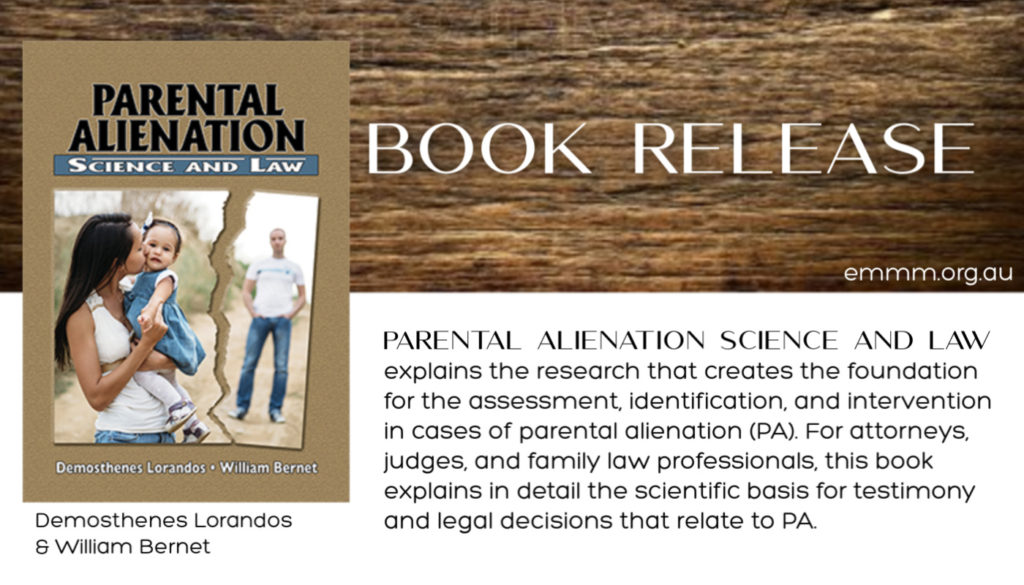BOOK RELEASE: PARENTAL ALIENATION – SCIENCE AND LAW
By Demosthenes Lorandos & William Bernet
ORDER >> https://www.ccthomas.com/details.cfm?P_ISBN13=9780398093242
“Parental Alienation – Science and Law explains the research that creates the foundation for the assessment, identification, and intervention in cases of parental alienation (PA). For attorneys, judges, and family law professionals, this book explains in detail the scientific basis for testimony and legal decisions that relate to PA. There are two complementary features for most of the chapters. First, the chapter authors address how evidence regarding PA meets the criteria of the Frye, Daubert, and Mohan cases as well as the Federal Rules of Evidence for testimony by experts. The second feature is to refute common misinformation. There is debate and disagreement about some aspects of PA theory. The editors of this book are concerned that some of the discourse regarding PA has spun out of control, into pervasive misinformation. This book provides plenty of evidence for overcoming that hurdle. The editors of this book and the chapter authors have extensive experience with both clinical and legal aspects of divorce, child custody, parenting time evaluations, PA, and related topics. The editors and chapter authors include six psychologists, three physicians, two social workers, four attorneys, and one judge. Collectively, these mental health professionals have testified as expert witnesses hundreds of times regarding family law topics. As an additional feature, the book contains four appendices and three indexes. Appendix A defines the concepts used in this book, so that the chapter authors and readers will use terminology in a consistent manner. Appendix B lists more than one thousand trial and appellate cases in the U.S. involving PA, organized by state. Appendix C presents twenty rather dramatic vignettes involving PA. Finally, Appendix D, “Sample Motion and Brief for Extended Voir Dire,” provides a motion and supporting brief asking the court to allow extended time to examine the competency of a proposed expert.”
Table of Contents
Preface
Section One: Clinical Considerations and Research
1. Introduction to Parental Alienation
2. The Psychosocial Assessment of Contact Refusal
3. Parental Alienating Behaviors
4. Parental Alienation: How to Prevent, Manage, and Remedy It
5. Parental Alienation and Empirical Research
6. Recognition of Parental Alienation by Professional Organizations
Section Two: Legal Issues
7. Alienating Behaviors and the Law
8. Admissibility of the Construct–Parental Alienation
9. Parental Alienation in U.S. Courts, 1985 to 2018
10. The Importance of Voir Dire in High-Conflict Family Law Cases
11. Parental Alienation: An International Perspective
12. Tips for Expert Testimony
13. Public Policy Initiatives Related to Parental Alienation
Appendices
A. Parental Alienation Terminology and Definitions
B. Parental Alienation in U.S. Courts, 1985 to 2018
C. Cases Illustrative of Alienating Behaviors
D. Sample Motion and Brief for Extended Voir Dire
Name Index
Subject Index
List of Cases Index
#parentalalienation #familylaw #science #childabuse #familyviolence


